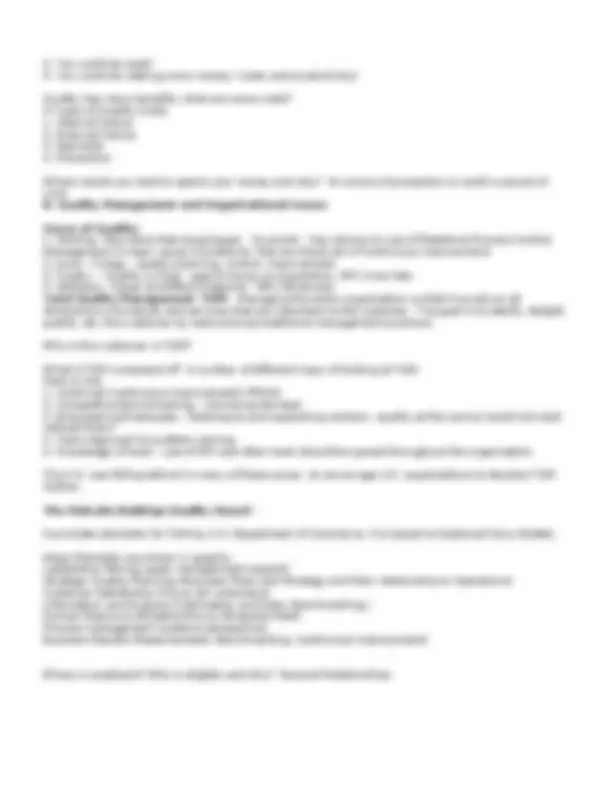



Study with the several resources on Docsity

Earn points by helping other students or get them with a premium plan


Prepare for your exams
Study with the several resources on Docsity

Earn points to download
Earn points by helping other students or get them with a premium plan
Community
Ask the community for help and clear up your study doubts
Discover the best universities in your country according to Docsity users
Free resources
Download our free guides on studying techniques, anxiety management strategies, and thesis advice from Docsity tutors
Material Type: Notes; Class: OPERATIONS MANAGEMENT; Subject: Management; University: Clark University; Term: Fall 2004;
Typology: Study notes
1 / 2

This page cannot be seen from the preview
Don't miss anything!


MGMT250 Notes September 14, 2004
1. Initial Stuff A. Schedule 1. Today we will go over some Strategic Decision Making H.W. (hand in). 2. We shall Begin Discussion on Total Quality Management and its elements. 3. Next time ATT UCS CASE Discussion begins – Please have case report completed and hand in at Beginning of class (or email by beginning of class). 4. ISO 9000 Discussion (do Foxboro reading assignment) for Next Tuesday (Questions appear below), 5. We will also begin discussion on CI tools next Tuesday 6. Week from Thursday we will do Tip Top Markets assignment from Book. 7. Tour at Polar Beverages on November 9, 8:00 am. 2. Foxboro IS09000 Reading Assignment Questions. This reading is on reserve in the Library.
**3. H.W. (On Board)